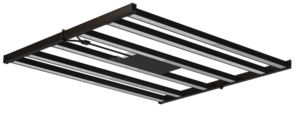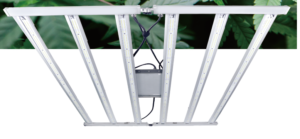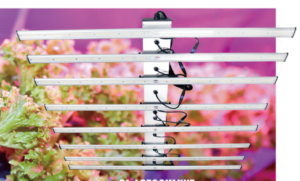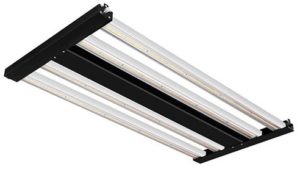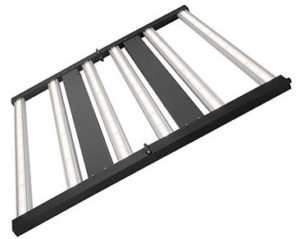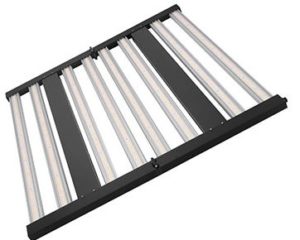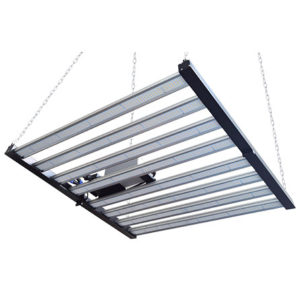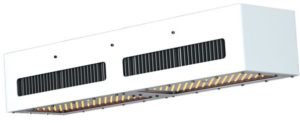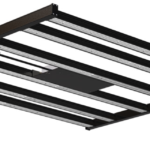
LED Grow Light Lamps Reduce Energy Usage – Article
Colorado pot grows used as much energy as 35,000 homes in 2014 – Legal cannabis is emerging as one of the nation’s most power-hungry industries.
By Jennifer Oldham Bloomberg News
Pot’s not green.
The $3.5 billion U.S. cannabis market is emerging as one of the nation’s most power-hungry industries, with the 24-hour demands of thousands of indoor growing sites taxing aging electricity grids and unraveling hard-earned gains in energy conservation.
Without design standards or efficient equipment, the facilities in the 23 states where marijuana is legal are responsible for greenhouse-gas emissions almost equal to those of every car, home and business in New Hampshire. While reams of regulations cover issues from tracking individual plants to package labeling to advertising, they lack requirements to reduce energy waste.
Some operations have blown out transformers, resulting in fires. Others rely on pollution-belching diesel generators to avoid hooking into the grid. And demand could intensify in 2017 if advocates succeed in legalizing the drug for recreational use in several states, including California and Nevada.
State regulators are grappling with how to address the growth, said Pennsylvania Public Utility Commissioner Pam Witmer. “We are at the edge of this,” she said. “We are looking all across the country for examples and best practices.”
Demand
“Consumers seeking a green lifestyle are likely unaware that their cannabis use could cancel out their otherwise low-carbon footprint,” Evan Mills, a senior scientist for California’s Lawrence Berkeley National Laboratory, wrote in an e-mail.
Indoor growing operations in 2012 racked up at least $6 billion a year in energy costs, compared with $1 billion for pharmaceutical companies, Mills found in a seminal study he did independent of the research institution. Some larger facilities today suck down as much as $1 million in power a month.
ArcView, an Oakland, Calif., research firm, estimates the retail and wholesale marijuana market will reach $4.4 billion in 2016.
“All these things consume too much power,” said Paul Isenbergh, a commercial real estate broker and co-owner of the 3,100-square-foot medical-marijuana operation called Sense of Healing. He gestured at equipment surrounding varieties with names like Grape Crush. “The air conditioning, the lighting, the fans, the scrubber, the humidifier.”
The atmosphere is calibrated to mimic outdoor conditions to allow growers to reap multiple harvests a year. In an unvirtuous cycle, the intense heat from the lights requires air conditioning and fans to keep grow rooms at 75 degrees, a dehumidifier to prevent mold and a carbon-dioxide injection system. The electric bill for all this: as much as $5,000 a month.
Electricity represents as much as 50 percent of an operator’s overhead, yet profits far outweigh costs, with a pound of medical marijuana fetching about $2,500 on the wholesale market, Isenbergh said. His costs to raise the weed from clippings are only $600 a pound.
Pot operations such as Isenbergh’s join data centers and electric cars as among the top new users of electricity for the Northwest Power and Conservation Council. The planning agency, which covers legal marijuana markets in Washington and Oregon, as well as Idaho and western Montana, found indoor growing sites will consume as much as 300 average megawatts by 2035, enough to power a small city.
Taxes
Some cities where growing operations are legal have seen power consumption soar as communities nearby made gains in meeting conservation goals. The disparity prompted several municipalities to tax growers who strain the grid.
In Arcata, Calif., which is in the marijuana-growing hotbed of Humboldt County, officials are banking $300,000 a year from an “excessive energy use tax” that went into effect in October 2013. Voters approved the levy in 2012 after police and fire departments spent as much as 20 percent of their time responding to calls at growing operations.
The City Council placed the measure on the ballot after finding that 10 percent, or 663, of Arcata’s households were being used for large-scale marijuana cultivation, according to Pacific Gas and Electric. Many were receiving subsidized rates based on low reported income, Mayor Michael Winkler said.
“Instead of having our electricity use going down, we had roughly a 30 percent increase in electricity use in five years prior to the tax,” Winkler said. “We were not meeting our sustainability goals as a result. Now we are.”
The tax caused the number of large home-grow operations to fall 90 percent, he said.
In Boulder County, commissioners levied an energy-usage fee on such facilities after discovering that a 5,000-square-foot operation consumed 29,000 kilowatt hours a month, about five times more than a typical commercial use, said Ron Flax, the county’s sustainability examiner.
Such operations send about 30,334 pounds of carbon dioxide per month to the atmosphere, county statistics show.
The fee will go in part to pay advisers to help growers become more efficient. It will go into full effect next year.

